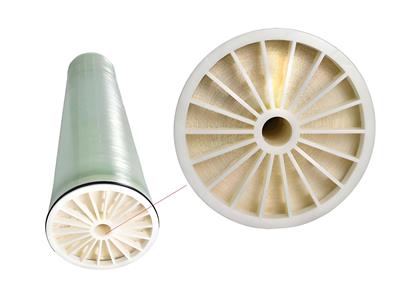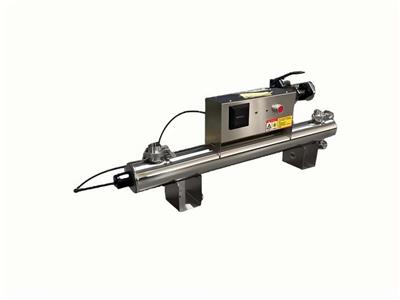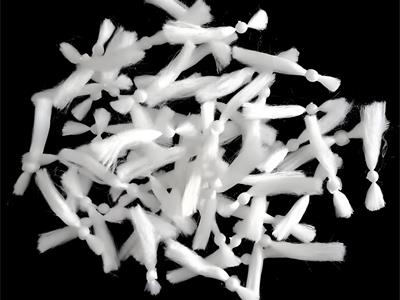- 2025-08-01
Reverse Osmosis Water Treatment Equipment User Manual
Reverse Osmosis Water Treatment Equipment User Manual
Please retain this manual for future reference.
Important Notes:
This operational manual is intended as a reference guide during use.
Our company reserves the right to make necessary modifications to this manual at any time due to printing errors or equipment updates/improvements, without prior notice.
This is not a warranty document. As user methods and conditions are beyond our control, the information and data provided herein are for reference purposes only and do not constitute guarantees.
Dear Customer:
Welcome! You now possess a water treatment system at the forefront of modern water purification technology. It produces purified water directly suitable for drinking, ensuring your water is clean and beneficial to your health. Before operating this unit, please read this manual thoroughly. Familiarizing yourself with the equipment, safety precautions, and strictly adhering to the instructions will ensure standardized operation, proper maintenance, optimal system performance, and a continuous supply of purified water. Should you encounter any difficulties during use, please contact your local distributor, who will arrange for a specialist to perform commissioning or repairs.
Section 1: Preface: Operating Procedures and Precautions
(A) Equipment Installation and Precautions
Handle and install this machine according to regulations. Our company is not responsible for damage caused by violating operating procedures.
Cleaning: Never spray water directly onto the water pump, electrical control box, or control panel during cleaning. This could cause component failure, electric shock, equipment damage, or personal injury.
Wiring: Check all wiring for damage. Replace any damaged wiring promptly.
Piping: Check all pipes for leaks. If found, use UPVC pipe-specific adhesive to seal.
Fasteners: Transportation may loosen screws. Check all screw fastenings and tighten any that are loose.
Power Supply: This machine uses 380V/220V, 50HZ AC power and must be connected via a dedicated residual current device (RCD). Connect each phase strictly according to the designated wire numbers. Incorrect connection will severely damage the unit.
Handling: Lift and place gently. When using a forklift, place wood planks or cardboard between the machine and the forklift contact points to prevent scratches or abrasion.
(B) Pre-Operation Precautions
Perform pre-startup maintenance checks as specified. Our company is not responsible for damage caused by failure to follow these inspection procedures.
Membrane Flushing: Flush the system's RO membrane for 5-10 seconds before starting water production.
Parameter Check: After startup, inspect the working pressure and flow rate of each stage/section of the equipment. Address any abnormalities immediately.
Chemical Check: Check that the chemical solution is sufficient in the dosing system tank. Replenish chemicals promptly.
Pretreatment Check: Confirm all filter stages are functioning normally without clogging. Ensure regular scheduled forward and backwashing and maintenance are performed.
Electrical Check: Ensure the input circuit is normal and all electrical components are functioning correctly without damage.
Valve Check: Before operation, verify that all pipeline valves are correctly opened or closed. Correct any errors immediately to prevent damage to pipelines, filters, or the pump running dry.
(C) Safety Precautions
Operate the machine strictly according to procedures. Our company is not liable for losses resulting from non-compliance.
Non-professional personnel must not disassemble this machine. Bear all consequences for resulting damages.
Regularly check if any sensor switches are loose or malfunctioning.
Ensure all screws and unions are tightened before the initial test run.
Do not touch or attempt to disassemble secured terminal blocks, pipes, or pressure vessels during operation.
Never place any part of your body inside the machine during startup.
Check all electrical lines for detachment or looseness before startup.
Strictly prohibit exposure to sunlight, it is recommended to use indoors
Section 2: Overview
This system utilizes imported, renowned Reverse Osmosis (RO) membranes and the world's most advanced reverse osmosis water treatment technology.
Effectively Removes: Fine impurities, colloids, organic matter, heavy metals, soluble solids, bacteria, viruses, pyrogens, and other harmful contaminants from the source water (Removal Rate ≥ 98%).
Retains: Water molecules, dissolved oxygen, and trace minerals beneficial to human health.
Key Components:
Booster Pump: Renowned booster pump ensures low noise, minimal vibration, long lifespan, and reliable operation.
Pretreatment: Capable of manual/automatic backwashing; utilizes replaceable filter cartridges for effective pretreatment, convenient replacement, and economical operating costs.
Functional Features:
Automatic and manual RO membrane flushing functions to extend membrane life.
Automated water production process (Automatic shutdown upon source water shortage or pure water tank reaching full capacity).
Low purified water production operating cost.
Section 3: Process Flow
Well Water→Raw Water Pump→Multi-Media Filter→Activated Carbon Filter→Scale Inhibition System→Precision Filter→High-Pressure Pump→RO Membrane→Purified WaterNote: The actual flow may vary depending on your specific equipment configuration.
Section 4: Main Technical Parameters
| Parameter Item | Specification / Value | Remarks / Condition |
| Rated Voltage/Frequency | AC 380V / 220V, 50HZ | |
| Power Consumption | 2 - 30 kW | |
| Purified Water Output | 0.25 - 10 tons/hour | Under standard test conditions (25°C) |
| Operating Pressure | ≤ 1.2 MPa | |
| Feed Water pH Value | 6.8 - 7.5 | |
| Removed Substances & Efficiency | Fine impurities, colloids, organics, heavy metals, soluble solids, bacteria, viruses, pyrogens, etc. | ≥ 98% |
| Operating Ambient Temperature | 5°C ~ 40°C | |
| Electric Shock Protection Type | Class II | |
| Required Source Water Quality | Must comply with GB 5749 "Sanitary Standard for Drinking Water" |
Section 5: Structural Features and Operating Procedures
1. Pretreatment Section:
* Sand Filter/Carbon Filter: Require regular backwashing, typically 1-3 times per week. Each vessel should be flushed for approximately 15 minutes per session. Follow the sequence: Forward Wash -> Backwash -> Forward Wash (or as indicated by the multi-port valve).
* Precision Filter (Cartridge Filter): Requires regular inspection and replacement of the PP filter cartridges.
* Scale Inhibitor Dosing System: Requires periodic addition of scale inhibitor to the chemical tank. Dose according to equipment output and the recommended ratio (e.g., 1:10).
2. RO Main Unit Section:
RO Membrane: Requires periodic physical flushing, chemical cleaning, and replacement.
Operating Procedure (External Control Start):
Key Instruments & Parameters:
Feed Water Pressure Gauge (HP Pump Inlet): Indicates inlet pressure (0.05MPa - 0.35MPa), used to assess raw water sufficiency.
High-Pressure Pump Outlet Pressure (RO Membrane Operating Pressure): Typically around 1.0 MPa, maximum 1.3 MPa.
Concentrate (Reject) Water Pressure: Pressure range similar to the HP pump outlet pressure.
Permeate (Product) Water Flow: RO membrane output (Units: Gallons Per Minute (GPM) or Liters per Hour (L/h)).
Concentrate (Reject) Water Flow: RO membrane wastewater discharge flow. Under normal pressure, the permeate-to-concentrate flow ratio is typically between 1:1 and 1:3.
Conductivity Meter: Provides online monitoring of product water quality (Reference standard: GB 17323-1998 "Bottled Purified Drinking Water").
Turn on the main power supply, followed by the equipment power switch and the raw water pump switch.
Observe the feed water pressure gauge until it rises above 0.1 MPa.
Turn on the high-pressure pump switch (this simultaneously activates the HP pump and the inlet solenoid valve, initiating purified water production).
System Auto-Protection: Automatically cuts power to protect equipment if feed water pressure drops too low. Automatically shuts down when the purified water tank is full. Automatically restarts to replenish water when the tank level drops.
Section 6: Maintenance
To ensure normal equipment operation, optimal filter performance, and compliance of treated water quality standards, users must regularly perform flushing, regeneration (e.g., backwashing), and replacement of filter media.
The service life of filter media (e.g., sand, activated carbon, PP cartridges, RO membrane) depends primarily on:
Quality of the source water.
Composition and quantity of impurities present.
Actual volume of purified water consumed.
Section 7: Common Fault Analysis
| Fault Phenomenon | Cause Analysis | Troubleshooting Method |
| Unable to Start Smoothly | Pure water tank is full | Check tank water level |
| Abnormal power supply | Check if power supply is properly connected and normal | |
| High Permeate Conductivity at Startup | Operating pressure not within rated range & concentrate water regulating valve is completely closed | Adjust operating pressure to rated range. Never fully close the concentrate water regulating valve. |
| Poor Taste or Odor in Water | Activated carbon adsorption saturated, unable to effectively remove taste, odor, or chlorine | Replace activated carbon filter media |
| Significant Drop in Water Output | High source water hardness causing RO membrane scaling | Install/use an automatic water softener and clean the RO membrane |
| Low water temperature (normal output decrease) | Heat the feed water (water temperature should not exceed 45°C) | |
| RO membrane fouled by organic matter | Clean the RO membrane using specialized Type B cleaning agent | |
| Abnormal Equipment Operation | PP filter cartridge severely clogged/dirty | Replace precision filter (PP cartridge) |
| Possible failure of electrical components (e.g., pressure switch, level switch) | Inspect relevant electrical components, troubleshoot, or replace faulty parts |
Copyright Notice:
The company reserves the right to modify the product without prior notice. The actual product may differ from this document after modifications.
The company retains all rights of interpretation for this manual.






